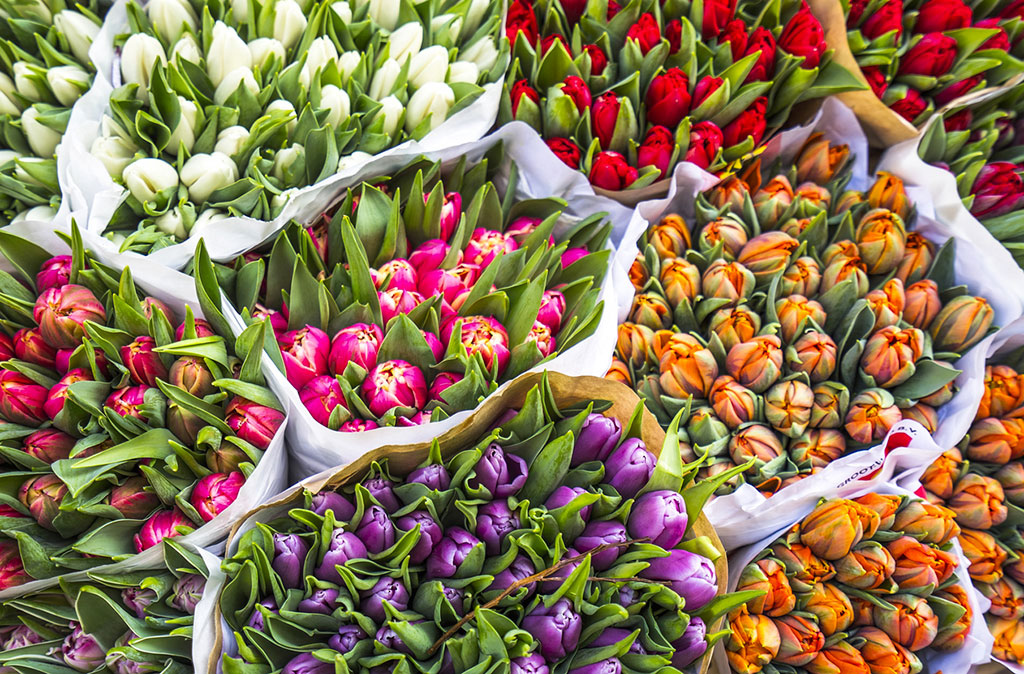Where to Buy Flowers for Less
Last updated November 2024

Whether you are bringing a bouquet to a dinner party or ordering dozens of roses for your kid’s wedding, “flowers are kind of universally loved, on a par with Adele and maybe chocolate,” says florist Holley Simmons. Flower shops, grocery stores, street vendors, and websites peddle petals, but it can be difficult to know how to get the best blooms (and prices).
The majority of cut flowers sold in the U.S. come from Colombia (which produces about half the blooms sold in the U.S.), Ecuador, or the Netherlands. Thanks to air freight, a bouquet of fresh stems can reach your home in as little as 48 hours. But the U.S. floral industry is becoming increasingly committed to buying locally grown blossoms.
Though there are many different arrangements, the traditional distribution chain includes five links: grower, broker/importer, wholesaler, retailer, and consumer. Inevitably, every hand that touches the flowers becomes a little greener. It is not unusual for the markup from grower to consumer on a fresh-cut designed floral arrangement to exceed 600 percent.
If you want an arrangement delivered, seek exotic or unusual flowers, or need lots of advice, your best bet is a retail florist. But if you’re willing to pick up the posies yourself, or want a typical bouquet or to arrange the blooms yourself, you have other options, most of which net big savings.
Street Vendors
Flower vendors pop up downtown, near shopping areas, or along major thoroughfares. The quality varies, depending upon when and where the street seller got them and how well they cared for them. Many vendors use the same wholesalers that supply florist shops, but some street sellers peddle several-days-old blooms. Some vendors work directly for flower shops (and sell the same stems), but some florists employ street hawkers to sell leftovers. Be especially careful about buying at the end of the day. Even if those lilies were fresh in the morning, chances are they’ve been sitting in the sun for hours and won’t last long in a vase. Our undercover shoppers found their prices averaged about 10 percent lower than those at supermarkets and about 50 to 70 percent lower than at most florists.
However, selection is usually very limited. And, of course, you can’t use a street vendor to provide flowers for a wedding or to deliver something to a friend in a hospital.
Wholesalers
In the Bay Area, you can also buy flowers from three wholesale markets, where many florists stock up. The San Francisco Flower Market in SoMa, Oakland Flower Market, and United Wholesale Flowers in San Jose are all open to the public. These wholesalers not only offer incredible variety but also tremendous savings: We found their prices were as low as the least expensive retail florists we shopped.
There are also online wholesalers that ship blooms directly from farms (usually in South America). For example, Sami Sacha Flowers sells stems either à la carte or in assemble-yourself-bouquet boxes ($75-$95 for 50 flowers that go well together). Whole Blossoms operates the same way but has larger flower recipe kits (65 to 500 stems) aimed at DIY brides or lavish dinner party hosts.
Grocery Stores and Warehouse Clubs
Like street vendors, supermarkets, warehouse clubs, and other mass merchandisers count on big-time foot traffic, selling flowers to shoppers who stop in to buy a few things but leave with a cartful of other stuff.
Supermarket floral departments range from basic to full-service. Most specialize in simple cut flowers, blooming plants (especially around holidays—think yuletide poinsettias or Easter lilies), and green potted plants. Full-service providers offer wire services and flowers for weddings.
Grocery store blooms usually come at low prices. In our shopping, we found their prices averaged about 40 to 75 percent lower than those at traditional florists.
There is substantial price variation for the same item among different supermarkets. For example, we found that prices for a dozen red roses ranged from $10 to more than $35, depending on which grocery chain and which day we shopped.
Garden Centers and Hardware Stores
You might not think of hardware stores for flowers, but many carry a wide variety of potted plants and hanging baskets among the mulch and such.
Florists
Good retail florists can meet almost any flower-oriented need—wire services, plants, other gifts, and custom arrangements for occasions like weddings. They can deliver an arrangement of flowers to your parents for their anniversary or send a get-well bouquet to a sick friend.
Some florists focus on wire-service business and arrangements with a standard “wire-service look”; others offer more customized original designs and exotic or unusual flowers. Click here for advice on picking the best florists.
National Networks
If you want flowers delivered locally or out of town, you can use national services like FTD, 1800Flowers, ProFlowers, and Teleflora. We discuss this in our article “Need to Have Delivered Out of Town?” Our take: For any delivery, ask a local florist—either here or near the recipient—to coordinate the job, rather than relying on a national outfit.


